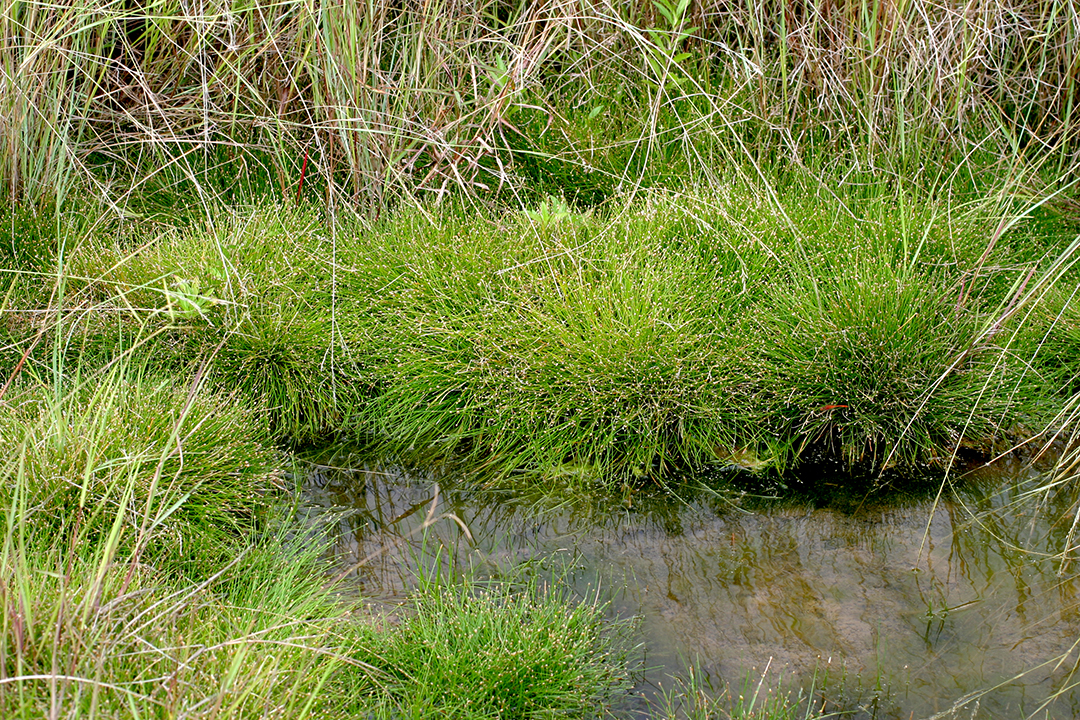|

Figure K (left). Eleocharis sp. growing around a small pond on Guam. Figure L (below right). Gestalt of a typical sedge and applicable terminology. (Image modified from Wagner, Herbst, & Sohmer, 1990, p. 1401).

Sedges are described as plants that resemble grasses or rushes. Indeed, the more than superficial resem- blances and accompanying difficulty encountered in identifing these small-flowered plants is the main reason I have constructed this key. However, I find most of the sedges fairly easy to differentiate, perhaps because fewer species of sedges occur in Guam as compared with the many grasses found there.
Sedges have the following general characteristics (Fig. L): culm (the upright stem that supports the inflorescence) leafy or not, usually three-sided (trigonous), and solid (or spongy; not internally hollow as in most grasses); leaves linear and sheathing the culm, in some species reduced just to the sheath part; plants spreading by rhizomes or stolons. A typical sedge inflorescence is a corymb: a racemose (branched) inflorescence that is flat or rounded on top because the lower branches (called rays) are longer than the upper branches. The image in Fig. L is not a real good example of a corymbiform shape and, of course, not all sedge inflorescences are corymbose.
Sedges and rushes are widely distributed in wet places or in water; however, many sedges occur in non-wetland environments. Another group of plants, also known as rushes (Family Juncaceae), resemble many Cyperaceae in growth form and typically also occur in wet places. Only a single species of Juncus is reported in the literature for Guam and the Marianas Islands.
Confirmatory identification of a sedge species usually requires consideration of 1) the small flower itself, 2) the structures supporting the flowers (spikelets), and/or 3) the achene (or seed; technically, the fruit). However, our key has been constructed to be field friendly wherever possible, avoiding the need to dissect the flower or observe the achene. Pay close attention to descriptive references to the spike and spikelets.
|